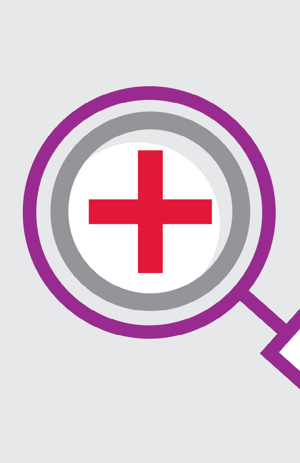February 2025
The Annual Baseline Self-Assessment:
The Path to Data-Driven Risk Mitigation
Table of Contents




Where We’ve Been and Where We Are Going in Risk
Historically policyholders came to Risk Management each year in search of educational opportunities that may provide them with a discount on their premium. For ProAssurance insureds, it often meant a two-hour loss prevention seminar, whether it was in-person in a hotel meeting room or via an online recording. This educational offering was a passive way of educating physicians in hopes of reducing the number of claims through preventive measures and improving defensibility when lawsuits became a reality. Other policyholders had the opportunity to take two hours of CME credits from a library of webinars and publications to qualify for their discount.
Currently there are still a number of educational resources for CME available online including seminars, live webinars and Claims Rx. A 2025 loss prevention seminar is in the works and anticipated to be released in March 2025. Risk Management's long-term goal is that the Annual Baseline Self-Assessment (ABSA) will become the main vehicle by which insureds receive any type of discount but, more importantly, that all insureds participate to help improve their practices.
Although education has a place in Risk Management and new offerings will continue to be available, we created the ABSA as another means to obtain a possible discount. The benefit of the tool is that all members of the practice are encouraged to participate, not just the physicians. The ABSA reaches all levels in a practice, and its educational benefits impact not just the physician or provider. This inclusive approach allows real-time data to be collected to show insights into the practice at all employee levels. Not only does the practice receive a comprehensive report, but they are paired with a Risk Management consultant who offers applicable risk reduction strategies and resources. These may include education to help mitigate pointed areas that have been identified as risks for future claims.
This improvement from (1) passive education to (2) only physicians and, finally, to (3) active participation of all team members was a vision of the Risk Management department many years ago. I am so proud to see that the first year of ABSA data has been completed. Risk Management is making strides to improve practices through our efforts to revolutionize the way insureds interact with our team.
From the agent’s perspective, the ABSA is a great tool to have a touch point with policyholders throughout their policy term. Agents can also partner with Risk Management to assist insureds in mitigating areas of risk that are identified in the report. Although the means of discount may have changed and expanded, the end result is improvement of risk management for our policyholders and a stronger relationship with agency partners. The ABSA is a tool that encourages more meaningful interactions with practices and really targets their individualized needs.
The success of the first year of the ABSA in 2024 illustrates insureds’ willingness to participate and choose this option as an interactive way to improve their practices. Future content updates will encompass more specialties and larger groups. Risk Management is committed to continued improvements each year to ensure applicability of the questions, contemplate emerging risks, and encompass the findings from prior data. Continuous improvement in the development of content ensures relevance and allows flexibility to evolve. Future automation will also improve the process, and data analytics will drive our educational resources and risk offerings.
The Risk Management department, in connection with the Data Analytics and Operations team, has been able to take a vision that began years ago and bring it into reality in 2024. I am committed to using Risk Management’s data to drive future educational offerings. I am excited to see continued improvements in interactions with policyholders and agents as we enter into the second year of the ABSA.


The ABSA – Step by Step!
Requesting the ABSA survey is easy, and any member of a healthcare team or practice can participate in completing this helpful and comprehensive Risk Management assessment tool. Agents and brokers can request the ABSA on behalf of their clients, and ProAssurance underwriters can make an internal request.
First, access the ABSA Request Form:
For ProAssurance insureds
- Complete the required fields. Please note that there is a place to list the primary contact for the participating medical practice.
- A link to the ABSA survey will be sent via email within a couple of days to the practice’s designated contact person. This email will include contact information for an assigned Risk Management consultant as well as instructions for completing the assessment. The medical practice can forward the link to all individuals in the office who are interested in participating in the ABSA. It is encouraged that all physicians, medical providers, and office staff fill out the survey.*
- The medical provider or staff member clicks on the provided link. They are then taken to SurveyMonkey to complete the ABSA. The survey takes 8-10 minutes to complete. The ABSA survey link will expire two weeks after its initial circulation. If the medical practice needs more time, they must contact their assigned Risk Management consultant to request an extension.
- After the survey period ends or the extension date has passed, the Risk Management consultant will generate a report. The report will be sent to the medical practice’s contact person. The practice is invited to contact the Risk Management consultant for assistance in addressing any areas of risk identified in the report.
*Potential Premium Credit
If eligible, physicians may be qualified for up to 5% premium credit for completion of the ABSA survey. However, it is not possible to earn CME through the ABSA. For questions, please reach out to our Risk Management team at 844-223-9648 or RiskAdvisor@ProAssurance.com.

ABSA 2024 Data Review
The Annual Baseline Self-Assessment (ABSA) is a comprehensive survey conducted among the entire healthcare team at medical practices. The ABSA evaluates critical risk areas that impact the effectiveness and safety of healthcare delivery. This includes diagnostic testing protocols, infection control measures, and emergency preparedness strategies. By analyzing the survey results, the Risk Management team can identify specific gaps in knowledge and comprehension among healthcare professionals. This enables us to create tailored educational programs and resources to minimize liability risks and enhance overall practice safety.
2024 marked our inaugural full year of collecting completed survey data on this scale as well as the expanded content—and the findings have exceeded our expectations. This extensive data collection process has allowed us to establish meaningful connections with over 400 medical practices, providing individualized feedback and actionable advice to support their risk management efforts.
In addition to building deeper and personalized consulting relationships with our insureds, we can use the data to drive risk management efforts further. With a whole year’s worth of data, we are now able to aggregate the survey results, enabling us to identify overarching trends and patterns.
These insights highlight key factors influencing patient safety and pressing healthcare risk management concerns. By analyzing this data, we can develop a deeper understanding of the common challenges faced by healthcare teams, ensuring we remain proactive in addressing potential risks and fostering an environment of continuous improvement in patient care and safety.
Below is a sample of survey results from the past year, as well as sample questions.


Maximizing Patient Safety with ABSA Survey Results
As a leading malpractice insurance carrier, we continuously seek ways to support medical practices in improving patient safety and mitigating risks. One of our most valuable tools is the Annual Baseline Self-Assessment (ABSA), a brief assessment that provides our insureds with critical insights into their current processes, identifies gaps, and highlights opportunities for improvement within their practices.
The ABSA can be completed online in about 10 minutes and is offered to all levels of staff within a medical practice with the goal of enhancing patient safety and risk management strategies. According to Joanne Simmons, Senior Risk Management Consultant, practices appreciate the ability to evaluate their strengths and weaknesses to gain a clearer understanding of where gaps may exist and improvements can be made. “The assessment results help give our Risk Management team a solid foundation from which to assist practices in filling those gaps by offering risk mitigation strategies and resources,” said Simmons.
ABSA respondents who have shared their positive feedback about the tool note how it encourages reflection and sparks meaningful discussions. One practice manager said that it “made us think about the processes,” and another added that the questions “would inspire some good conversations within our office.”
The ABSA is particularly useful for revealing overlooked areas or areas in which staff may have become lax or complacent. “Respondents often express gratitude when the ABSA highlights those blind spots,” said Simmons. “For example, we’ve had practices discover that their informed consent or tracking processes in general needed improvement, or that new staff members required more training than they realized.”
Once a medical practice completes the assessment, the Risk Management team examines the lower scores and provides the staff with targeted educational materials to help improve those results. “Whether it’s a two-minute video or an in-office ‘lunch and learn’ presentation, we have the resources to help practices improve,” said Simmons. “Ultimately these insights are invaluable for practices seeking to refine their patient safety measures and better educate their staff.”
We encourage you as a valued agency partner to recommend the ABSA to our shared clients. Completing the assessment speaks to a commitment to patient safety and risk mitigation.
The ABSA is completely voluntary, with no repercussions if gaps are identified, and it does not affect a practice’s insurance premiums. It is simply a complimentary service designed to help practices become better at what they do—taking care of patients. “All of our respondents have been open to feedback and appreciative of the opportunity to improve,” said Simmons.
We hope you will encourage your clients to sign up for the ABSA and take advantage of this valuable tool. The results could be the key to improving both patient safety and risk management within their practice of medicine.
Survey results show that the majority of practices surveyed agree that the ABSA addresses important aspects of risk management:

Utilizing the ABSA to Enhance Client Relationships
As an agency partner, your role goes beyond simply providing policies—you are a trusted advisor to your clients, helping them to reduce risk and improve the safety and efficiency of their practices. One tool that can significantly enhance your ability to support your clients is our new Risk Management tool, the Annual Baseline Self-Assessment (ABSA). This exclusive resource provides critical insights into a practice’s risk management processes and offers a unique opportunity to add value when talking with your clients.
Here's how you can leverage the ABSA to create deeper connections with our shared customers and your prospective clients and strengthen their trust in your services.
The ABSA is a brief, user-friendly survey designed to help healthcare providers at all levels benchmark their practice’s office processes against industry standards. It’s aimed at assessing how well the team as a whole manages medical liability risks.
By asking straightforward questions related to daily office operations, the ABSA sheds light on areas where knowledge gaps may exist and where risk management protocols could be enhanced. The tool can be completed quickly by all practice staff, including physicians, making it an efficient way to gauge the effectiveness of current office processes.
Its user-friendly design allows everyone—from front desk staff to clinical teams—to participate in the self-assessment process, making it an inclusive resource for evaluating and improving office operations. By involving all levels of a medical practice, the ABSA fosters a collaborative approach to risk management, helping to identify gaps and enhance protocols across an entire team.
When you offer the ABSA to healthcare providers, you are giving them the chance to proactively assess and address their liability risks. In doing so, you as an agency partner are building stronger relationships with your clients.
Once a practice receives its comprehensive report that highlights areas where improvements are needed, you have opened a door for the practice to engage with risk management specialists in a consultative manner, positioning you as a valuable partner in their risk management journey. By offering insights into how they can strengthen their defensibility in the event of a claim, we demonstrate a commitment to their long-term success.
When you encourage practices to use the ABSA to identify gaps in their office processes, you are demonstrating that you care about more than just selling a policy. You are proactively involved in their risk management efforts, which can be a key differentiator in a competitive market.
Empowering healthcare providers with insights that can help them improve both patient care and their bottom line can be invaluable for practices looking to streamline operations, increase staff training, and minimize liability risks. By partnering with ProAssurance, you give your clients access to this exclusive tool that enhances their ability to manage risk more effectively.
The ABSA process is designed to be straightforward, making it easy for you to introduce it to your clients. Here’s a simplified overview:
- Request the ABSA – You can request the ABSA on behalf of your clients, or they can request it directly.
- Survey Completion – Once the survey link is sent, it takes about 10 minutes per staff member to complete.
- Review Results – After the survey ends, ProAssurance’s Risk Management consultants generate a report with actionable insights.
- Consultative Follow-Up – You can assist your clients in understanding the report and help them address any identified risks.
The ABSA benefits all parties involved. For the practice, it provides a clear picture of their strengths and weaknesses, helping them better understand the risks they face. For you, it opens a door to deeper engagement, allowing you to foster stronger relationships with your clients while positioning yourself as a trusted partner in risk reduction. Of course, for ProAssurance, it helps ensure our customers are proactively managing their risks, reducing the likelihood of claims, and strengthening their overall defensibility in the event of a claim.
Some practices may even qualify for a premium discount for completing the ABSA, adding further incentive for them to participate.
Incorporating the ABSA into your client conversations can help give you a competitive edge. By offering this exclusive tool, you demonstrate a commitment to helping healthcare providers improve their risk management practices, ultimately making them more confident in their ability to reduce claims and improve defensibility when they happen.. The ABSA provides actionable insights, builds stronger client relationships, and creates opportunities for consultative conversations—all of which contribute to a more successful partnership.
As an agency partner, embracing the ABSA not only adds value to your offerings but also positions you as a trusted advisor, helping your clients safeguard their practices and patients while mitigating their risk exposure. Let our Annual Baseline Self-Assessment be the tool that helps set you apart in the competitive malpractice insurance market.


Connecting ABSA Results to Risk Management Content
The most obvious question about how the ABSA impacts Risk Management content is what triggers the team to review it based on the ABSA. For the answer, we spoke to Senior Risk Management Consultant Joanne Simmons, who leads the charge on this initiative.
The review process, according to Simmons, begins with an assessment of overall ABSA results. “If we see low scores in one of the ABSA categories, that triggers us to look at our existing content on the topic,” she said. “We first look at what we currently have in our Risk Management Guidelines to see if we need to beef them up and add more guidance to them.”
For those unfamiliar with them, the Guidelines are meant to provide an overview of many topics to drive visitors to other, more in-depth resources. “We really don’t want to go very deep in there,” said Simmons, “but we still want the content to be useful, so we may add a little more information there or maybe update guidance on what’s already there.”
The ABSA helps the Risk Management content team identify knowledge gaps in areas of risk where our insureds would benefit from new or updated content. It helps us offer targeted education based on individual practice results or, if we see trends, we can develop new content bundles. For example, in the past year Risk Management has added more risk reduction strategies on confidentiality to the Guidelines because, according to Simmons, “Technologies like AI have heightened the need for education on confidentiality. As technology and digital platforms become more integrated into healthcare, the risk of unintentional breaches also rises. Ongoing education on confidentiality helps ensure that healthcare professionals are aware of the evolving risks associated with digital platforms and technologies.”
In addition to the examples mentioned above, the ABSA is specifically impacting the Risk Management Guidelines with additions and updates to the following topics:
- Patient Requests to Amend the Medical Record
- Negative Reviews and Online Comments (Responding to Patient Complaints)
- Tracking and Follow-up
- Medical Assistants
- Managing Disruptive Patient Behavior
A big focus for Risk Management in 2025 is building on the successes of the ABSA’s impact on content development. As Simmons puts it, “We’re trying to do more this year to connect the topics we address in the ABSA with our content development to identify topics that may need some more development and then adding additional details on the topic at different levels.”
While plans can change as situations change, here are some initial plans Risk Management intends to pursue toward that goal:
- New educational opportunities for physicians, staff, and practice managers
- Coordinating content for Rapid Risk Reviews
- Office staff education
- "2 Minutes: What's the Risk?" videos
- Risk Management Guidelines updates
- A Hospital landing page
- Malpractice Case Studies issues with common themes
If 2024 is any indication of how successful Simmons and the team will be in 2025, they are in for a busy and fruitful year of content development.


Workplace Violence in Healthcare: The Value of the ABSA
ProAssurance is proactive in addressing the issue of workplace violence in healthcare. Our Risk Management team is offering resources, including an upcoming webinar, to help bring awareness to this growing problem and offer safe, practical, and effective tools for prevention, response, and risk mitigation.
Workplace violence is any act or threat of physical violence, harassment, intimidation, or other threatening behavior that occurs at the work site. It ranges from threats and verbal abuse to physical assaults and even homicide. It can affect and involve employees, clients, customers [patients], and visitors. (Occupational Safety and Health Administration)
The U.S. Bureau of Labor Statistics reported a steady increase in workplace violence involving intentional injuries caused by a person to a worker in the private healthcare or social assistance industry from 2011 to 2018. More recent surveys in 2024, including from the American College of Emergency Physicians and National Nurses United, have shown (respectively) that 91% of emergency physicians reported being victimized by violence in recent years, and 81.6% of nurses experienced at least one incident of workplace violence in 2023.
Despite these alarming statistics, ASBA results reveal low positive response rates in the category of emergency preparedness, which included questions related to violence in the workplace. Only about 58% of participants in 2024 agreed that they had received training on responding to hostile or aggressive behavior. This is significant as these types of scenarios can quickly escalate and threaten the safety of both staff and other patients.
Risk Management will hold a live national webinar April 10, 2025, at 7:00 p.m. ET on the topic of workplace violence in healthcare called Mastering De-Escalation in Healthcare: From Recognition to Resolution. This quarterly webinar is intended for our insureds and clinicians but is also open to the public, so anyone can register including agents, non-insureds, and ProAssurance team members.
Program Description
Workplace violence in our nation continues to rise, with the highest incidence occurring in the healthcare and social assistance industry. While preparation and planning are key to an effective emergency response, observations from the ProAssurance Annual Baseline Self-Assessment (ABSA) data show that only about 58% of medical practice participants agreed they had received training on responding to hostile or aggressive behavior. This presentation will examine the legal obligations for workplace safety in healthcare, emphasizing the importance of proactively training staff to prevent violence and promote a culture of safety. Actionable de-escalation and post-incidence response strategies will be shared to equip healthcare professionals with practical tools to mitigate and respond to conflicts to increase safety for both staff and patients.
Learning Objectives
This live educational activity will support your ability to:
- Examine legal obligations for workplace safety in healthcare.
- Implement proactive training measures to prevent workplace violence and promote a culture of safety.
- Apply actionable de-escalation strategies and an effective post-incident response.
CME Information
The ProAssurance Indemnity Company, Inc. is accredited by the Accreditation Council for Continuing Medical Education (ACCME) to provide continuing medical education for physicians.
The ProAssurance Indemnity Company, Inc. designates this live activity for a maximum of 1 AMA PRA Category 1 Credit™. Physicians should claim only the credit commensurate with the extent of their participation in the activity.
Who Should Attend: Open to all physicians, advanced practice professionals, staff, and administrators
Date and Time: Thursday, April 10, 2025, 4:00 p.m. PT / 6:00 p.m. CT / 7:00 p.m. ET
Registration Link: https://proassurance.zoom.us/webinar/register/WN_ZqSTek15SEaHMSlkSS03ZQ
In addition to the webinar, Risk Management will release a podcast discussion with Claude Howard Jr., who has over 17 years in law enforcement and is currently Director of Inpatient Mental and Behavioral Health Services as well as the Director of Security and Environmental Safety. The discussion will cover training and its effectiveness in preventing violent incidents and highlight the importance of including security and law enforcement in planning and response. The podcast also features an emergency department scenario of a patient in a stressful state and includes tips on how to approach and respond. The podcast has a tentative release of March 2025.
Risk Management Bundles: Workplace Violence in Healthcare (including information on worksite analysis, prevention, education and documentation) https://riskmanagement.proassurance.com/bundles#workplace
ProAssurance Article Library (Disruptive Patient Behavior articles) https://riskmanagement.proassurance.com/article-library
Disruptive Patient Behavior Training Video https://riskmanagement.proassurance.com/staff-education
Occupational Health and Safety Administration https://www.osha.gov/healthcare/workplace-violence
Media Spotlight: Advancing Healthcare Through Data-Driven Risk Management
Aaron Hamming, Risk Management Director of Data Analytics and Technology, was featured in the Healthcare Business Review, as ProAssurance was named a “Top Healthcare Risk Management Services Provider” in 2024.
The article highlights Hamming’s work and the data-driven technological tools that have helped ProAssurance become an industry-leading specialty insurer. The article also spotlights the Annual Baseline Self-Assessment (ABSA), diving into the specifics of the visual and quantitative representations of areas for improvement in a practice.
Read the full article, “ProAssurance Advancing Healthcare Through Data-Driven Risk Management,” at HealthcareBusinessReview.com/ProAssurance.
.png?width=300&name=MicrosoftTeams-image%20(28).png)
Many factors, including changes in healthcare delivery, tort law, the litigation environment, the rise of nuclear verdicts, social and economic inflation, and changes in reimbursement from fee-for-service to value-based care are impacting the healthcare industry. Additionally, patient volumes are down slightly year over year, and operating margins are improving. However, these issues are not universal across the industry. Generally, larger systems are faring better, while smaller, community-based hospitals face challenges. (MPL Association)
S&P Global Ratings, a provider of credit ratings, research, and risk analysis, has provided a comprehensive review of the global reinsurance sector, forecasting promising earnings for the industry over the next couple of years. The report outlines a stable outlook for the reinsurance sector, citing strong operational performance and robust capitalization, despite the looming challenges posed by natural catastrophes, economic pressures, and volatility in financial markets. (Reinsurance News)
In the 2024-2025 academic year, for the sixth time in a row, women made up the majority of medical school applicants, matriculants, and total enrollment, according to new data released on January 9 from the Association of American Medical Colleges (AAMC). In the 2024-2025 academic year, women made up 57% of applicants, 55% of matriculants, and 5% of total enrollment, the AAMC found. Women matriculants rose 0.2%. Among men, there was a 1% increase in the number of matriculants in 2024-2025. It was the third year in a row that male matriculants did not decline following six years of declines from 2016 to 2022, according to the AAMC report. (Medscape)
Nearly half of a sample of primary care physicians (PCPs) in the United States were affiliated with hospitals in 2022, almost double the percentage just 13 years earlier in 2009, a new study of nearly 200,000 physicians found. Their negotiated prices for office visits are more than 10% higher than for independent physicians. Meanwhile, 1.5% of PCPs were affiliated with private equity (PE) firms in 2022, and their office visit prices were nearly 8% higher, according to a report in JAMA Health Forum. (Medscape)
The American Heart Association (AHA) report, published recently in the journal Circulation, found that 941,652 Americans died from cardiovascular disease in 2022, the most recent year for which data is available. That’s an increase of more than 10,000 from the just over 931,500 reported to have died from cardiovascular disease in 2021. It also means that a person in the U.S. dies of cardiovascular disease every 34 seconds, or nearly 2,500 people every day, according to the AHA report. (ABC News)

Assessing Your Risk Exposure: Service vs. Sales Strategy

As an MPL agent, you provide clients and prospects with risk assessments to manage their healthcare liability. But how often do you assess your agent activities to avoid lost opportunities?
A few years into my medical sales career, things seemed to be going great—I was constantly busy. Yet my sales numbers were flatlining. It didn't make sense. I worked sunrise to sunset most days. I did generate sales. However, while making modest gains in some accounts, I was simultaneously losing business to competitors and others hadn’t seen me in months.
My wake-up call came during a territory review. Despite solid sales volume, my leadership team was clear: my job wasn’t just to maintain the business—they expected growth. The threatening tone in my manager's words, “Maybe your territory is too big,” forced me to evaluate how and where I spent my time each day.
The Barriers to Sales Growth
Since sales activities lead to sales (shocker, I know!), I assessed my sales vs. service time. It confirmed what I’d suspected—I’d fallen into the service trap. I was so focused on being everyone’s go-to sales rep that I handled everything—from setting up surgeries to delivering products—tasks that couriers or support staff could handle. Service activities kept me busy with everything but actual selling. I only delivered a sales presentation when I was lucky enough to cross paths with a surgeon in an account, but it was usually impromptu, rushed, and ineffective.
Keeping a log of all my activities and noting where I spent my time was very telling. It showed that sales calls were relatively infrequent on the list, and there were parts of my territory I rarely visited.
The KPIs to Assess
I focused on the following to shift to more of a sales focus:
Territory Coverage:
- Made sure no account went more than 4-6 weeks without seeing me.
- Implemented concrete follow-up plans for sales in progress.
- Tracked conversion percentages by account each quarter.
Sales Activities:
- Set minimum daily and weekly goals for sales calls.
- Tracked the number of product presentations delivered.
- Identified and had sales conversations with the people who could say “yes.”
Time Management:
- Carved out time for at least one sales call each day.
- Started clustering my sales calls around my service stops. Whenever I was already in an area for a customer visit, I’d reach out to as many prospects as possible nearby.
- Monitored the number of tasks I delegated versus handled myself.
Sales started mounting thanks to two fundamental shifts: methodically tracking my activities and making sales a priority. By assessing how I spent each day and noting the time dedicated to actual selling, I could spot where service tasks were hijacking my sales time. Also, segmenting accounts by growth potential and soonest to buy helped me allocate my time strategically and catch opportunities I’d previously missed.
What began as a threatening performance review became a valuable lesson—you can’t improve what you don’t measure. With concrete data about my daily activities, I made targeted adjustments that produced dramatic results.
As you guide clients through risk assessments to protect their healthcare operations, consider evaluating your agent practices to safeguard against missed opportunities. While exceptional service remains crucial, remember that every hour spent on tasks others could handle represents potential growth walking out your door. While it’s true you can’t sustain what you don’t maintain, you can’t grow what you don’t pursue.

|
Written by Mace Horoff of Medical Sales Performance. Mace Horoff is a representative of Sales Pilot. He helps sales teams and individual representatives who sell medical devices, pharmaceuticals, biotechnology, healthcare services, and other healthcare-related products to sell more and earn more by employing a specialized healthcare system. Have a topic you’d like to see covered? Email your suggestions to AskMarketing@ProAssurance.com. |
Risk Management Roundup
The use of non-FDA-approved medical products and approved products used off-label in the delivery of healthcare is common. While multiple clinical scenarios may necessitate the use of medical products in this fashion, there are associated liability exposures to be aware of to properly mitigate. Both professional and product liability exposures will be examined through closed-claim examples centered on the use of non-FDA-approved medical products. Risk mitigation strategies will be provided based on lessons learned from claims to avoid common pitfalls in a clinical practice and improve patient safety.
This month’s issue also introduces our new digital format. Read it here.
The Allegation
The physician negligently introduced morphine and subsequently doubled the prescription one day prior to the patient’s death.
Case Background
A 41 YOM with a history of chronic back pain presented to establish care with a family practice physician. The physician and nurse practitioner managed his ongoing chronic low back pain, asthma, type 2 diabetes, lower extremity pain, depression, and anxiety. Read the full case here.
Social Determinants of Health: Increasing Awareness
This course will educate learners about social determinants of health (SDOH) and their impact on patient outcomes. The purpose of this presentation is to help clinicians better support patients who are impacted by certain social barriers so they may receive equal care. The learner will understand how personal bias affects patient care and how to reduce bias during the delivery of care. Patients’ previously experienced trauma and the downstream effect of future care rendered will also be discussed. In addition, the learner will understand how negative labels and documentation may affect the care patients receive. Find all seminars here.







